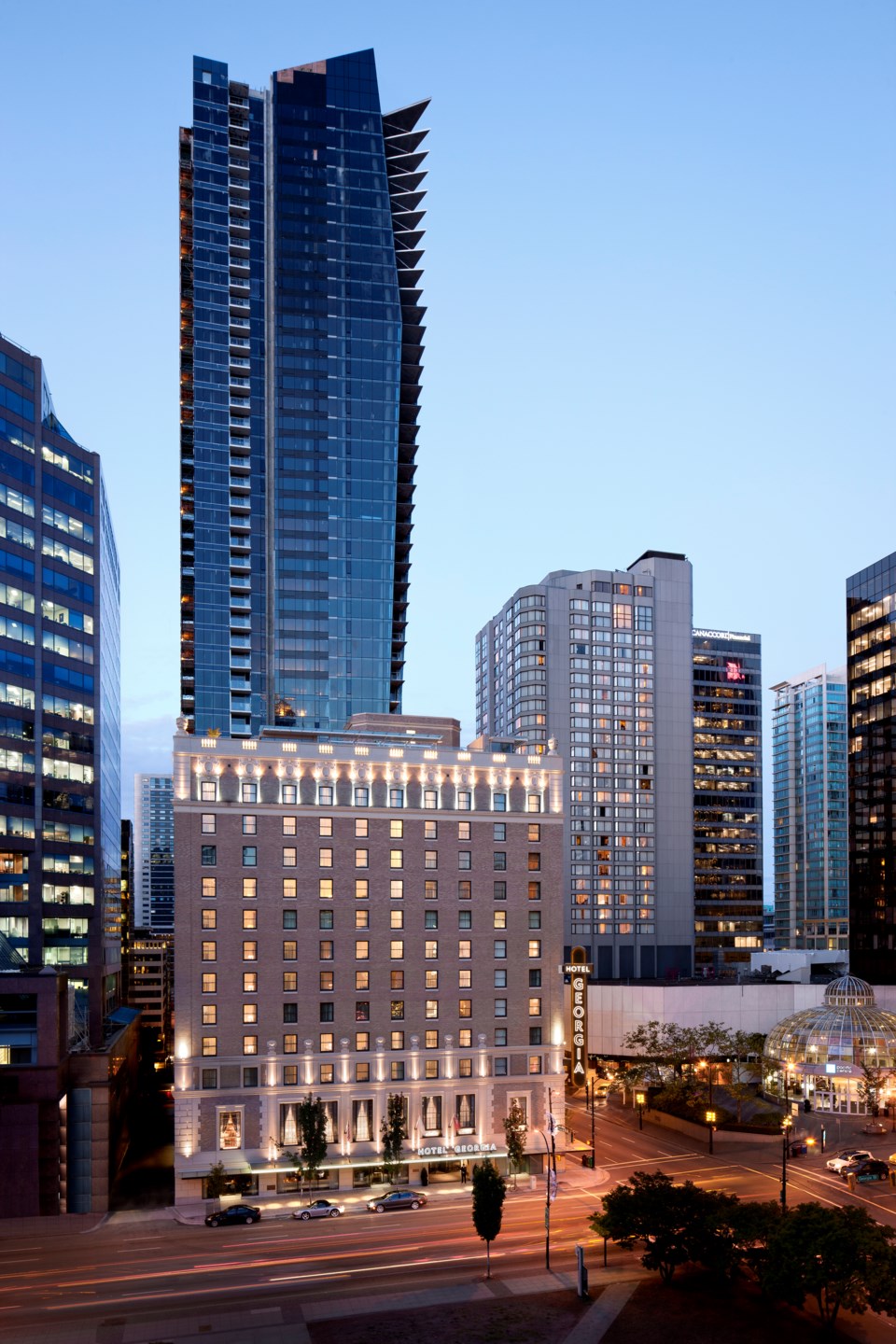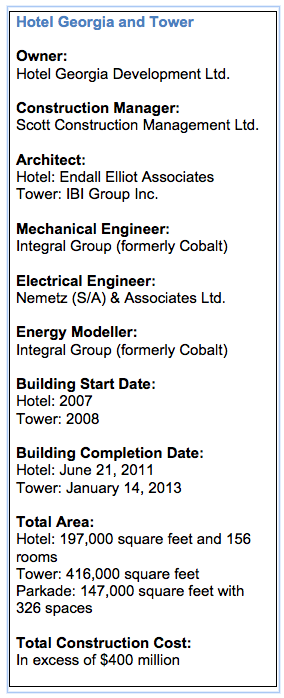It is not easy to balance restrained elegance with modern sleekness, but the recent restoration of the historic Hotel Georgia in the middle of downtown Vancouver has managed to do just that. The multi-award-winning development plays the soft, brown brick of the original 1927 hotel against the shimmering glass and steel of the adjoining 48-storey commercial and residential tower, and somehow manages to make both stand out.
But the two buildings stand out in other ways, too, not least for their energy efficiency.
From the beginning, Ken Bowden, Chairman of Hotel Georgia Development Ltd., was determined the development would conserve as much energy as possible. “It was a no-brainer for me,” he says. “I’m a Brit. I come from an environment where energy costs are through the roof compared to what’s paid here, so it’s just logical for me. But no matter what you pay for electricity, it’s good business, too. It’s all part of the asset value. A building is more valuable if it costs less to run, whether you’re operating it yourself, or selling it on.”
Early in the development process, in 2007, the company’s design team signed up with BC Hydro’s New Construction Program, which provides funding for an energy-modeling study – a simulation of how a building might function throughout a year if it’s designed and built with a variety of energy-saving measures – along with additional financial incentives for implementing those measures.
“We would have done an energy study anyway,” says Ken Bowden, “because it just makes sense. But this way, we also received a nice incentive for installing the measures the study identified – it was a drop in the bucket, of course, of our overall construction costs, so we didn't do it for the money, but we didn’t turn it away either and it did help cover the initial extra costs for going energy efficient. I think being involved in the program also helped focus our efforts: it set a standard we were determined to exceed.”
The energy-modeling study indicated that the hotel and tower combined could save as much as 944,832 kilowatt hours a year, or about $70,000 a year in energy costs, compared to similar buildings without those measures by incorporating:

- A distributed heat pump system for the residential portion of the tower that uses a common water loop for heating and cooling.
- Occupancy sensors in all the hotel rooms connected to a four-pipe fan coil system to ensure heating and cooling is reduced when a room is empty.
- High-efficiency window glazing throughout both buildings. The glass panels on the south side of the tower also include photovoltaic cells to convert sunlight into electricity to light the tower’s common areas, such as lobbies, elevators and stairwells.
- LED lighting and lighting controls.

A number of other measures, too, have helped reduce energy use even beyond the levels identified in the BC Hydro energy study, including a ground-source (or geo-exchange) heat pump system installed below the 8-storey underground parkade. The system extracts heat from the earth beneath the frost line and transfers it to the hotel and the commercial portion of the tower (the first 12 storeys) for heating; it then reverses the process to cool the two buildings in summer.
Some measures, like LEDs, may sound old-hat now, says Ken, but they were not when the design team was first planning the buildings. And they are effective. “The geo-exchange system and the photovoltaic cells are the big headliners, but in the hotel world, down time of rooms for maintenance is a big issue and so is annoyance to our hotel guests. The LEDs use less power and they last a long time, so there is less maintenance, lower running costs and less annoyance.”
In addition, he says, having a single set of high-end amenities – one pool, one spa and one gym – for hotel guests and tower residents to share is also an energy saver. Guests and residents benefit from bigger and better facilities that also happen to use less energy than if they were separate. For residents, the shared amenities also mean lower strata fees.
Says Ken Bowden, “We’ve now won I don't know how many awards, for engineering, for design, for heritage renovation and restoration, and at least some of that is due to the care we took in making these buildings energy-efficient. I’m coming up to 68 years old and I like to entertain myself with challenges. I like to do the right thing, too.”
To find out more about energy modeling and BC Hydro’s New Construction Program, visit bchydro.com/construction or call 1 866 522 4713.
Looking for new ways to build better?
BC Hydro Power Smart’s New Construction Program can provide energy modeling funds to help you identify energy-saving measures that will lower operating expenses and increase the value and marketability of your building. Learn more…




